Towering over N. Cleveland and W. Eugenie Sts. in the Old Town neighborhood of Chicago is St. Michael’s, a Romanesque Catholic church dating from just before the Great Chicago Fire. Not good timing, since the building was thus in the path of the conflagration.
“As the fire moved past Holy Name Cathedral, religious from nearby institutions rushed to St. Michael’s for respite, but they knew that the fire was just a few hours away,” the church tells us at its web site. “Priests, brothers, and nuns, helped by parishioners, packed parish treasures onto an oxcart and fled. Soon, flames tore into all the parish buildings, leveling all of them. Only the walls of the church remained standing.”
By 1873, the church had been rebuilt, though various modifications have occurred since then.

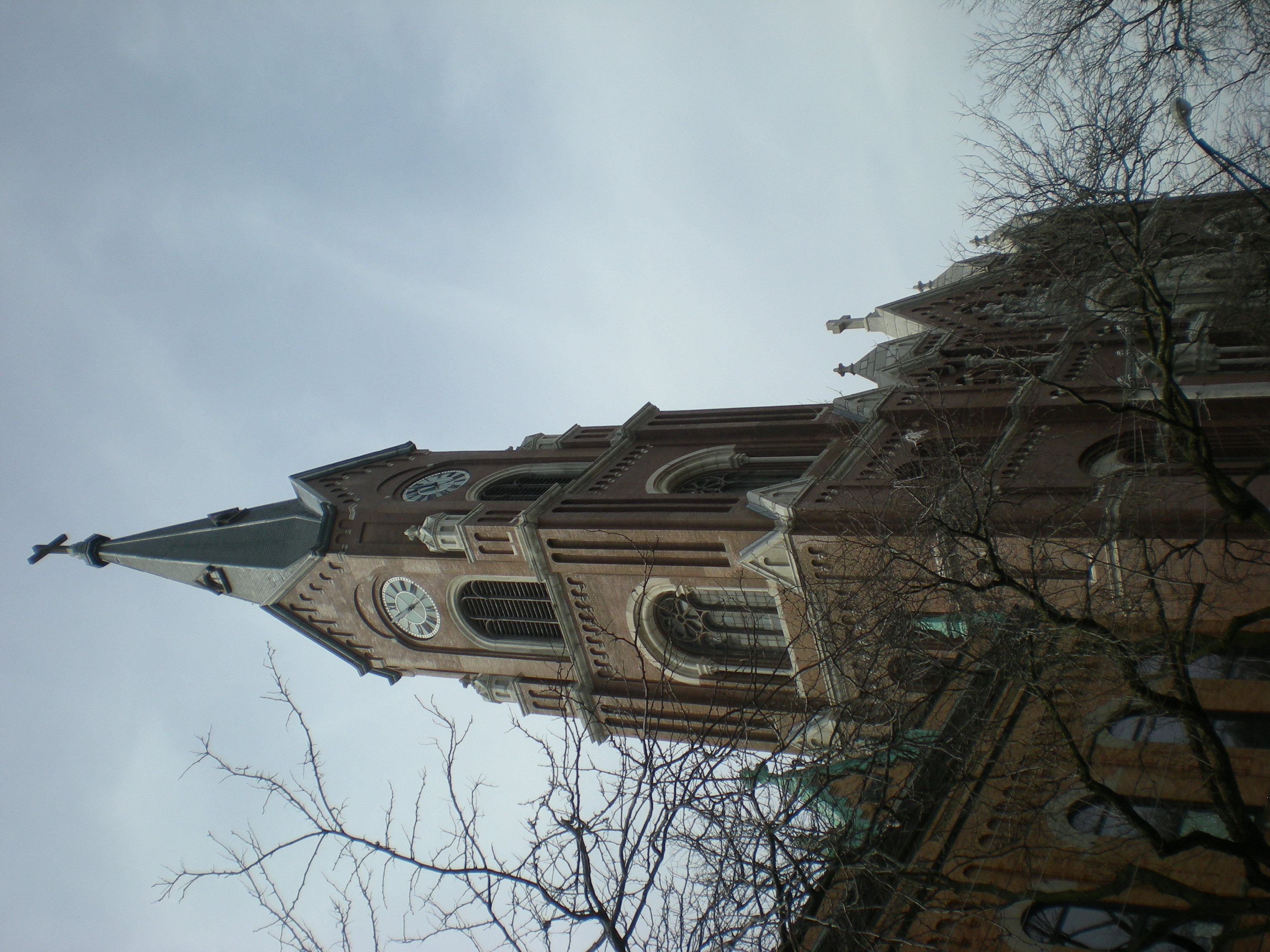 Look closely up there and you see the Archangel Michael, sword drawn, ready to do battle with Old Scratch and his minions.
Look closely up there and you see the Archangel Michael, sword drawn, ready to do battle with Old Scratch and his minions.
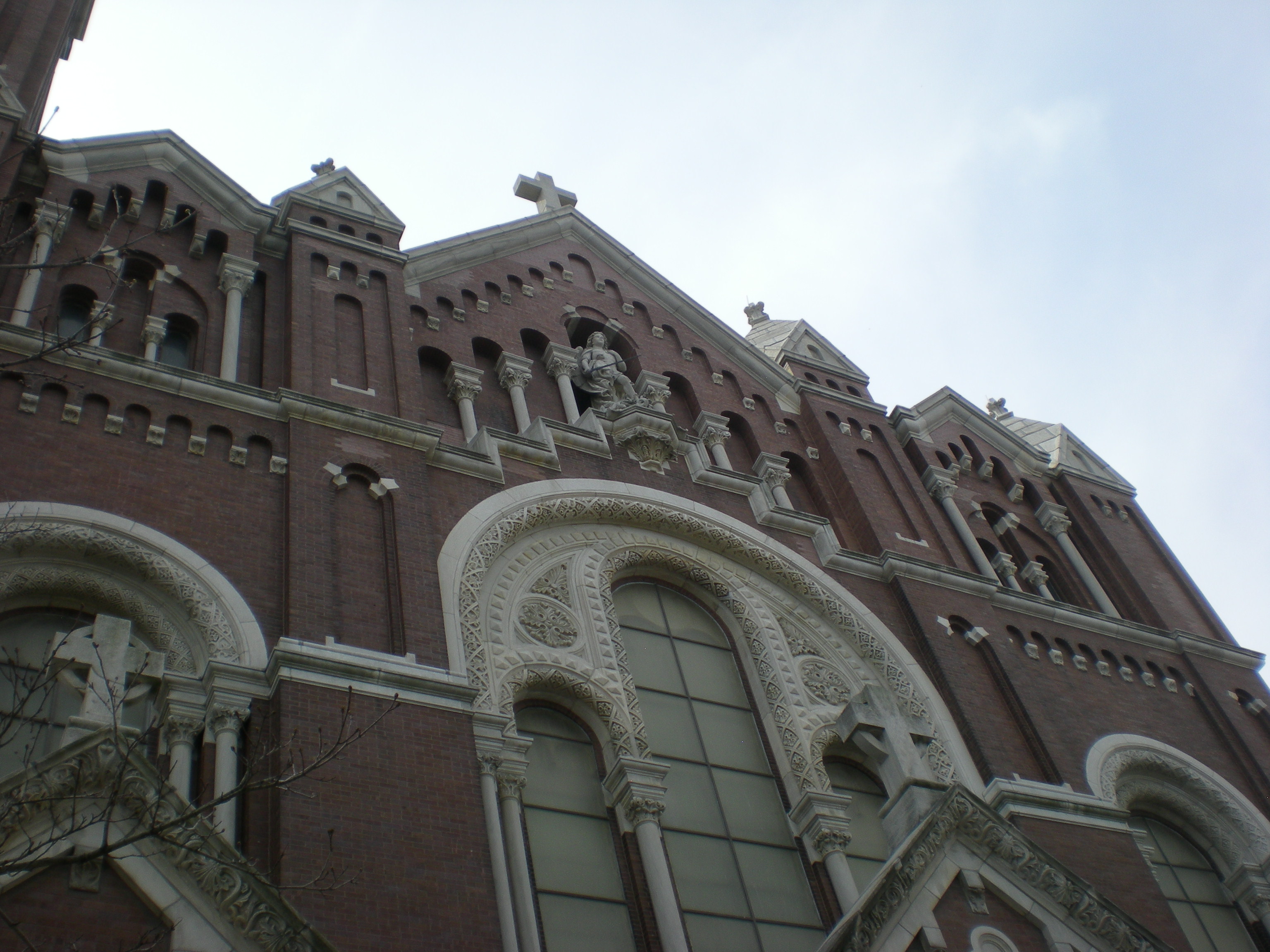 The interior looks like this: Bavarian Baroque, according to the AIA Guide to Chicago.
The interior looks like this: Bavarian Baroque, according to the AIA Guide to Chicago.
The archangel is also depicted outside on the plaza, facing the church. His sword is at his side, after vanquishing Old Scratch (at least, I assume that’s Satan underfoot). Good thing none of the nearby telephone wires were damaged in the struggle.
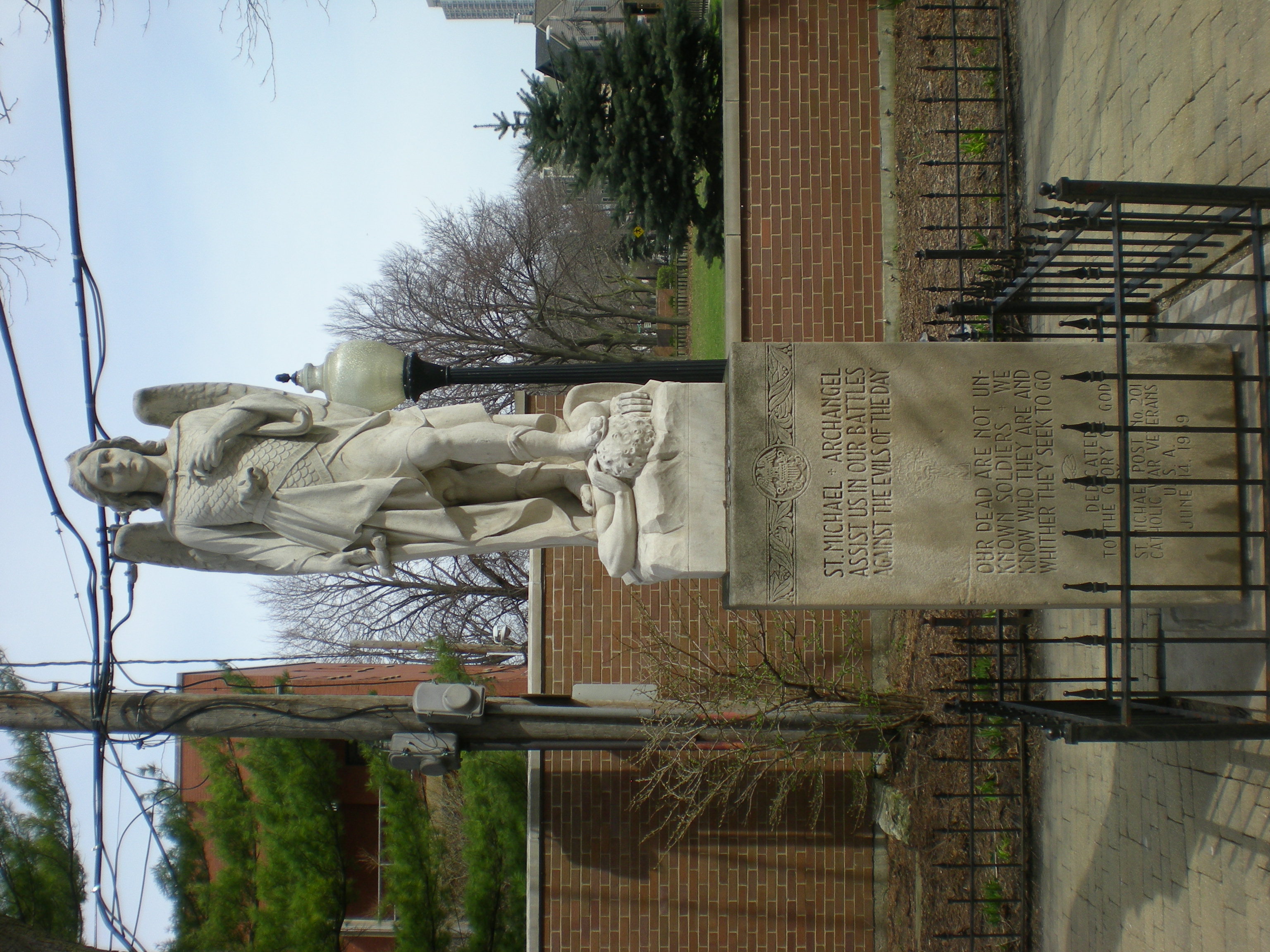 The plaza itself is a pedestrian zone that cuts the flow of cars on that section of Eugenie St. That’s unusual. I can’t think of another church in Chicago that has one. It helps make that part of Old Town distinct.
The plaza itself is a pedestrian zone that cuts the flow of cars on that section of Eugenie St. That’s unusual. I can’t think of another church in Chicago that has one. It helps make that part of Old Town distinct.
A few blocks to the north, at Wisconsin and Orleans, is the less distinct — at least as a building — Church of the Three Crosses, which is affiliated with both the United Church of Christ and the United Methodist Church.
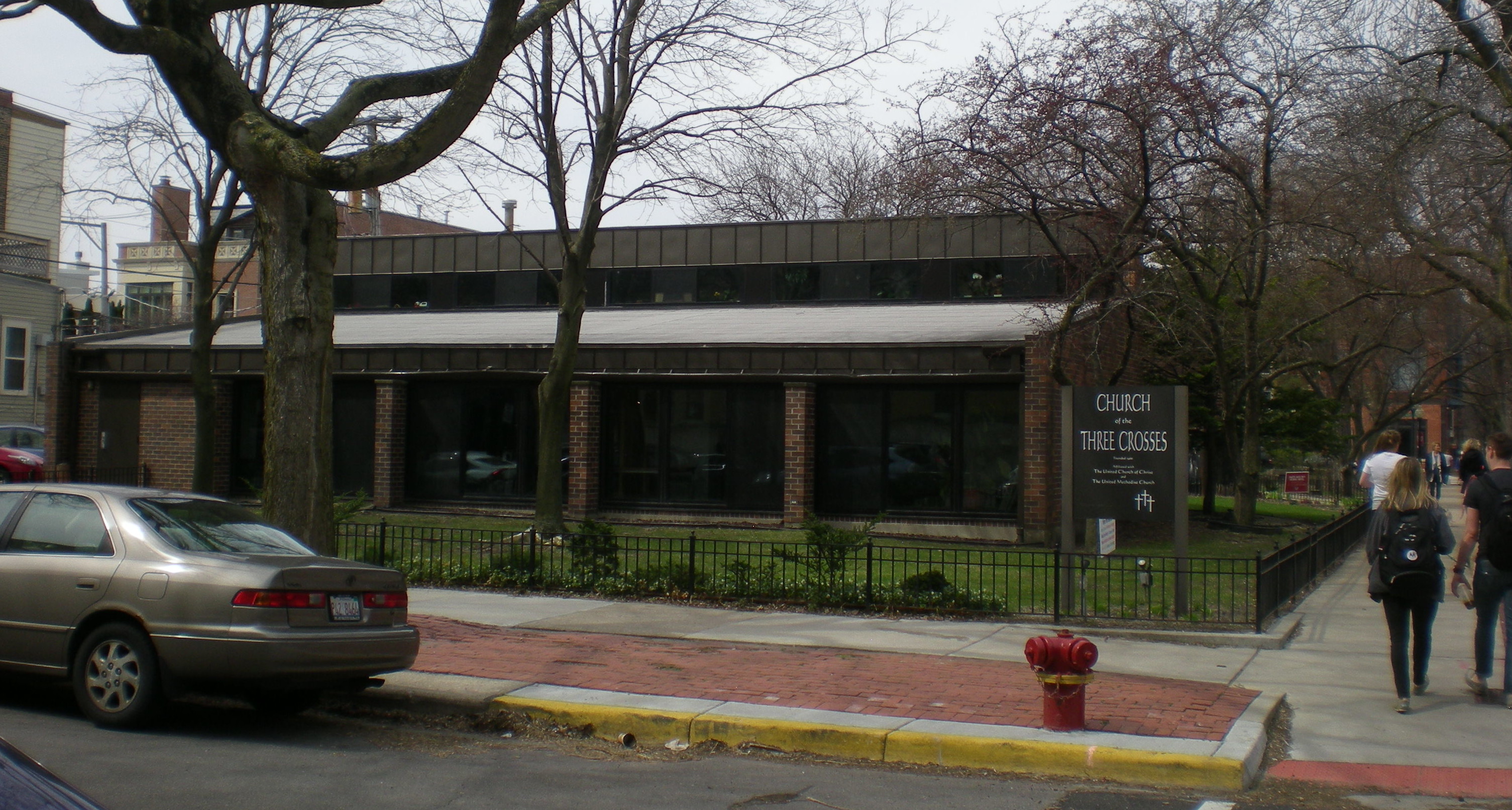 Around back, however, is a sign of the times.
Around back, however, is a sign of the times.
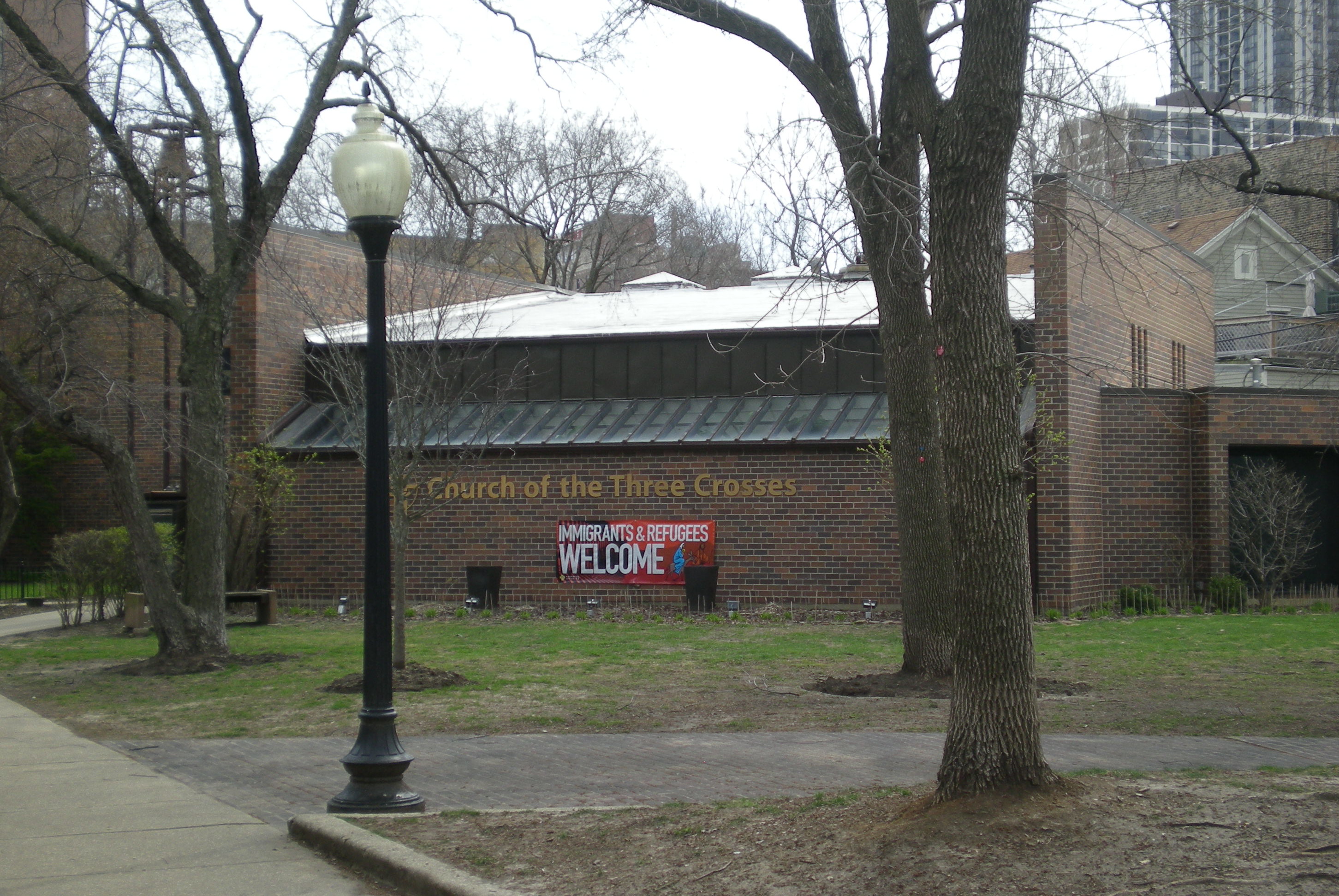 Roughly between St. Michael’s and the Church of the Three Crosses, on W. Menomonee, is the Midwest Buddhist Temple, a temple of the Jodo Shinshu school of Buddhism.
Roughly between St. Michael’s and the Church of the Three Crosses, on W. Menomonee, is the Midwest Buddhist Temple, a temple of the Jodo Shinshu school of Buddhism.
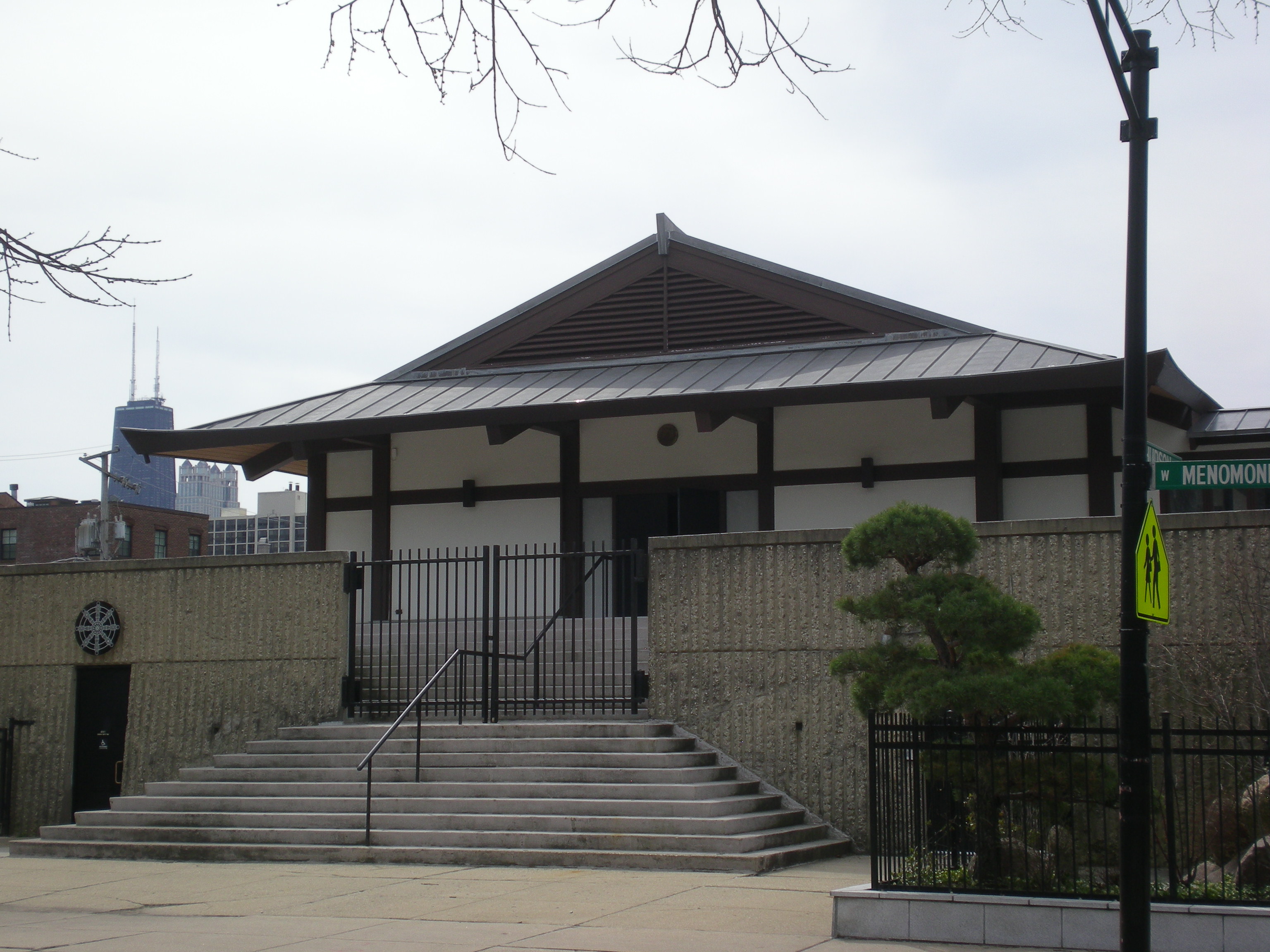 “Jodo Shinshu, also referred to as Shin Buddhism, was founded in Japan by Shinran Shonin (1173-1262),” explains the temple’s web site. “It was Shinran Shonin who made Buddhist teachings accessible to people of all walks of life — in contrast to the traditional, primarily monastic practice of Buddhism.
“Jodo Shinshu, also referred to as Shin Buddhism, was founded in Japan by Shinran Shonin (1173-1262),” explains the temple’s web site. “It was Shinran Shonin who made Buddhist teachings accessible to people of all walks of life — in contrast to the traditional, primarily monastic practice of Buddhism.
“Between 1900 and 1940, many Jodo Shinshu temples were founded along the West Coast of the United States. But it wasn’t until 1944 that the Midwest Buddhist Temple was founded in Chicago by Rev. Gyodo Kono — its beginning linked to the ‘resettlement’ of many Japanese-Americans who moved to the Midwest to start new lives as World War II came to a close.”
At the edge of the property is a small but lovely garden, designed by Hoichi Kurisu of Portland, Ore., who also did the Anderson Gardens in Rockford.
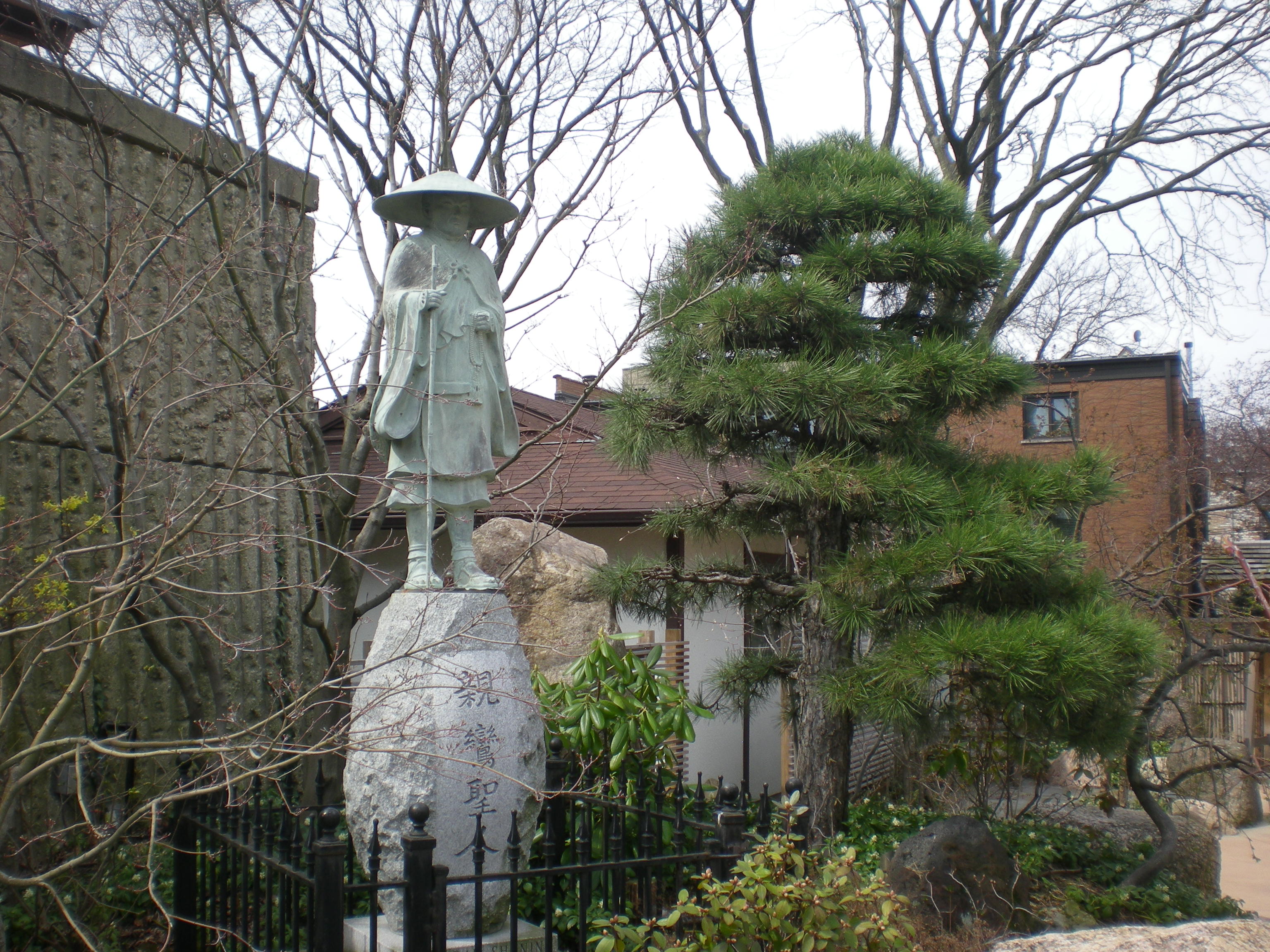
 “The boulders, set into place by a 30-ton crane, were especially important in representing the topographical features of Shinran Shonin’s walk from Mt. Hiei to the people in the Japanese villages as he spread the teachings of Shin Buddhism.”
“The boulders, set into place by a 30-ton crane, were especially important in representing the topographical features of Shinran Shonin’s walk from Mt. Hiei to the people in the Japanese villages as he spread the teachings of Shin Buddhism.”
Luckily, these days there are funiculars connecting Mt. Hiei with the rest of Japan.